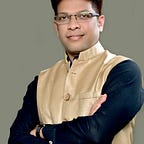5 Steps to Gain Leadership Quickly by Solving Problems
Individuals can think of me, but leaders must think we. Thinking we mean other people are included, and that also means their problems are also there for the leader to deal with. Most leaders are either entering a problem zone, in the middle of a problem or just trying to solve one. Problem-solving is the essence of what leaders exist to do.
Karl Popper, one of the most influential 20th-century philosophers of science, explained it stating “All life is problem-solving.” It is a well-known fact that the best leaders are the best problem solvers. Problems don't have to be problems unless you allow them. The most effective leaders approach problems through a lens of opportunity. Here are the 5 steps to gain leadership quickly by solving problems:
- Problems introduce us to Opportunities
Albert Einstein said,” In the middle of difficulty lies opportunity”. Everyone cannot have this kind of attitude but any leader who is capable of shifting his or her thinking towards problems and difficulties has the potential to become a problem solver. Good leaders anticipate the problems so they can position themselves for success.
2. Open Communication to get a clear picture of the Problem
Most Leaders are too quick to talk and lead and too slow to ask questions and listen. Problem-solving requires the latter approach. Talk to the people closest to the problems and listen to them without any judgment. They may already know the possible solutions or suggest the best possible. As the leader thinks about solutions to problems, he needs to gauge the impact on the lives of the people. People will support more readily when they have had more input into decision making.
3. Pay Attention to How People respond to the Problems
As a leader, you need to pay attention to how your people respond to the problems. You need to observe people closely as they encounter problems to see how they respond. The leader needs to spend time helping them learn to deal with problems with courage. Great leaders use problems as stepping stones to win the trust of the people.
4. Solve Problem with the help of People, not Alone
Great leaders never solve problems on their own. If someone tries to do, they will be forever solving their problems. There will be no ownership among the people and hence no relationship of trust. You must solve the problems with them. It also involves the important step of people’s empowerment which also injects the sense of pride in them. Effective leaders inspire people to lift their game by making the problem-solving process highly collaborative; for them, it’s an opportunity to bring people closer together.
5. Identifying and Developing a Team of Problem-Solvers
While dealing with the people in the problem-solving process, a leader comes across a wide range of people. Each one of them would be having a different attitude and approach towards the problem. A good is also a great observer and in this process, he can identify people who have the capacity to deal with problems at the lower level. Once they start to see how you approach problems and begin to take a similar approach, ask them to try to resolve the problem with the best possible solutions at their level and consult with you before coming to any conclusion. In this way, they can be empowered and equipped to deal with problems. IF small problems kept coming up to you every time, you are creating a problem for yourself by not helping your people to be better problem solvers.
So Great leaders have a strategy that serves as the foundation for how the problem will be approached, managed and solved. They anticipate the unexpected and utilize the strengths of their people to assure the strategy leads to a well-accepted and sustainable solution. That is why it is a proven fact that Problem-solving is the fastest way to gain Leadership.
